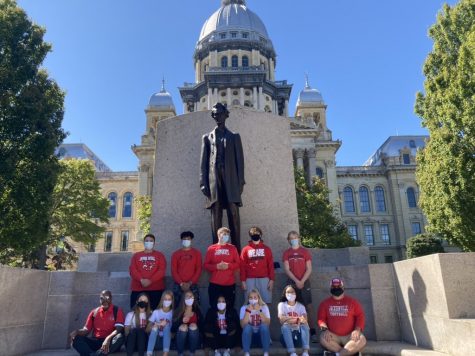Explaining sustainability, the new fashion movement
October 18, 2019
Sustainability in fashion is becoming a much more discussed topic in the current decade, particularly in mid- to high-end fashion. This is due to the increased awareness of the environment, ethical labor practices, and the difference in quality of clothing from sustainable brands in contrast to fast fashion brands. Sustainability means purchasing high quality clothing that will last for a long time and is also not harmful to the environment.
Low-quality clothing such as those from fast fashion brands like Forever21 and H&M follow unethical labor policies; they often manufacture their clothes in foreign sweatshops in which the workers have very little pay and poor working conditions, similar to that of the US during the 19th century. Many do not receive time to tend to their families and do not have fire exits in their workplaces. The clothing is also made from low-quality material and is easily destroyed; thus, it is often quickly thrown away. In fact, fast fashion clothing contributes to about half of the textile waste that is released in the environment because of how short it lasts. In addition to these downsides, these companies promote a mentality among its demographic in which people are convinced they always need to buy more clothes and constantly need to keep up with monthly trends. This is because of how many items they always have in store due to how cheap and quick it is to produce them. Awareness of all of these factors is why sustainability is becoming more known in the fashion community.
Reformation is the brand that markets itself as the sustainable brand. It is one of the first companies to follow a policy of transparency, making every detail of their manufacturing and laboring tactics easily accessible on their website. It is known for its trendy feminine dresses and statement combat boots. Mainstream brands that are also considered sustainable are Levi’s, Madewell, and Re-Done, which are known for their fine jeans, and Doc Martens, known for their variations of leather shoes.
Youtubers and influencers such as Ashley (bestdressed) and Kristin Leo are popular advocates for shopping sustainably and promote the policy of “reduce, reuse, and recycle”. This means reducing the amount of textile waste that is released to the environment by fast fashion brands by purchasing fewer but higher quality clothing items- quality over quantity. Reusing and recycling entails that to have an ethical closet, one should also sell, donate, or reconstruct clothes they do not want anymore and also purchase those from other people or thrift. This contributes to the environment and allows for people to avoid supporting unethical labor policies that unsustainable brands follow. On their Youtube channels, Ashley and Kristin have thrift haul videos, clothing DIY videos, and also informational videos that explain tips on selling old clothes and reconstructing ones with potential. The St. Louis Fashion Fund, which is relatively near Jacksonville, recently hosted an event over the summer called “Creative Process” in which designers with shops on the Delmar Loop had pitches talking about the importance of sustainability and displayed their creative designs.
The increased popularity of thrifting clothing and reselling apps such as Poshmark, Ebay, and Mercari are also large contributors. One of the strongest factors, however, is the trendiness of vintage clothing. American 70’s, 80’s, and 90’s styles and silhouettes are now very popular in both mainstream fashion as well as the alternative fashion scene, so people are seeking these styles in thrift stores and resale apps much more. All of these above mentioned factors have created a new ethical fashion movement in the current decade called sustainability. There will soon be a follow-up article about this topic: explaining how to shop sustainably and and giving tips on reconstruction, thrifting, and reselling.






